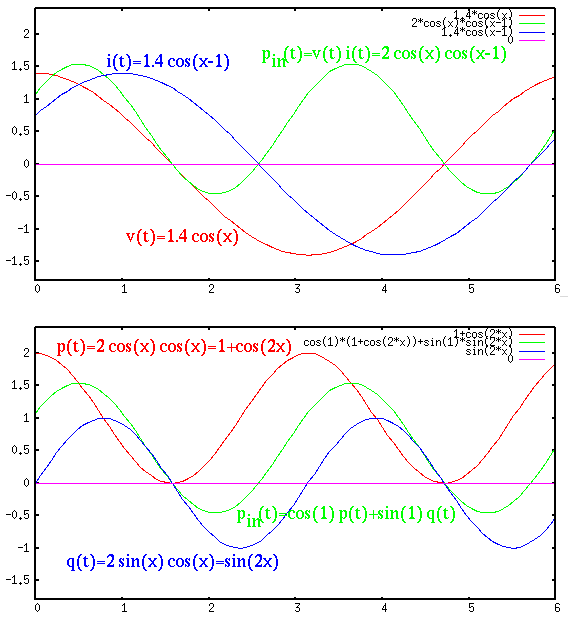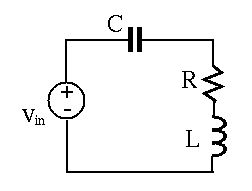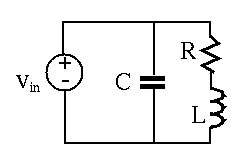Next: Load/Source Matching for Maximum Up: Chapter 3: AC Circuit Previous: Radio/TV Broadcasting and the

All loads of a power plant can be modeled by a two-terminal network of passive elements (resistors, inductors, capacitors, without any energy sources) with a total complex impedance
 |
(391) |
 , the phase angle
, the phase angle
 of the impedance is
positive. We are concerned with the energy consumption (by
of the impedance is
positive. We are concerned with the energy consumption (by  ) and
storage (in
) and
storage (in  ) in the load. Let the input voltage to the load network
be:
) in the load. Let the input voltage to the load network
be:
 |
(392) |
 |
(393) |
 is the RMS or effective value of the current.
Note that the current is lagging the voltage by an angle
is the RMS or effective value of the current.
Note that the current is lagging the voltage by an angle  .
.
Consider the instantaneous power of the load defined as the product
of the voltage and current:
 |
 |
 |
|
 |
![$\displaystyle 2V_{rms}I_{rms}\;\cos(\omega t)\;[\cos(\omega t)\cos\phi
+\sin(\omega t)\sin\phi ]$](img1064.svg) |
||
 |
![$\displaystyle V_{rms}I_{rms} \left[\cos\phi\, \left(2\cos^2(\omega t)\right)
+\sin\phi\,\left(2\cos(\omega t)\sin(\omega t)\right) \right]$](img1065.svg) |
||
 |
![$\displaystyle V_{rms}I_{rms} \;\left[ \cos\phi\; p(t) + \sin\phi\; q(t) \right]$](img1066.svg) |
||
 |
![$\displaystyle S \;\left[\cos\phi\; p(t) + \sin\phi\; q(t) \right]
=P\; p(t)+Q\; q(t)$](img1067.svg) |
(394) |
 |
(395) |

 as the
as the

The plots below show that the instantaneous power 





We note that
![$\displaystyle \frac{1}{T}\int_T p(t)dt=\frac{1}{T}\int_T [1+cos(2\omega t)] dt=1
\;\;\;\;\;\;
\frac{1}{T}\int_T q(t)dt=\frac{1}{T}\int_T \sin(2\omega t) dt=0$](img1075.svg) |
(396) |
 :
:
 |
 |
![$\displaystyle \frac{1}{T}\int_T p_{in}(t)dt
=\frac{1}{T}\int_T \left[P\; p(t) + Q\; q(t) \right] dt$](img1078.svg) |
|
 |
 |
||
 |
 |
(397) |
 represents the average power dissipation
by the load over one period
represents the average power dissipation
by the load over one period  ;
;
 is not consumed but converted back
and forth between the energy source and the energy storing (inductive)
elements in the load.
is not consumed but converted back
and forth between the energy source and the energy storing (inductive)
elements in the load.
The apparent power



 |
(398) |
 , the above can
also be written as:
, the above can
also be written as:
 |
(399) |
 above, we get:
above, we get:
 |
(400) |
 |
(401) |
 ;
;
 , which is dissipated by the
resistive component
, which is dissipated by the
resistive component  of the load;
of the load;
 , which is stored in and
released from the reactive component
, which is stored in and
released from the reactive component  of the load.
of the load.

Improvement of Power Factor
The Power factor is defined as
 |
(402) |
 by reducing
by reducing  ,
for higher efficiency of the power transmission system, i.e., to deliver
the real power
,
for higher efficiency of the power transmission system, i.e., to deliver
the real power  to the load with minimum reactive power
to the load with minimum reactive power  (thereby
minimum current and power dissipation along the transmission line).
(thereby
minimum current and power dissipation along the transmission line).
To do so, we can include a
shunt capacitor



The most straight forward way is to add the shunt capacitor




However, we also note that at resonance, the voltages across 



 |
(403) |
 becomes
becomes
 ,
which could be much higher than the expected source voltage
,
which could be much higher than the expected source voltage  (without capacitor
(without capacitor  ) if
) if  is large. Consequently, improper
operation of the load or even damage may result.
is large. Consequently, improper
operation of the load or even damage may result.
The right way to compensate for the inductive impedance of the circuit
is to include the shunt capacitor 

Now the overall load becomes
 |
 |
 |
|
 |
 |
(404) |
 so that the new phase angle
so that the new phase angle
 is zero, i.e., the phases of the numerator
and denominator need are the same:
is zero, i.e., the phases of the numerator
and denominator need are the same:
 i.e. i.e. i.e. i.e. |
(405) |
 we get:
we get:
 |
(406) |
 is smaller than the capacitance
is smaller than the capacitance
 required for the series
approach.
required for the series
approach.
To reduce the cost of a large capacitance needed for the phase angle of
the load to be reduced to zero 

 |
(407) |
 we get the required capacitance. As now we have
we get the required capacitance. As now we have
 |
(408) |
 |
(409) |
 |
(410) |